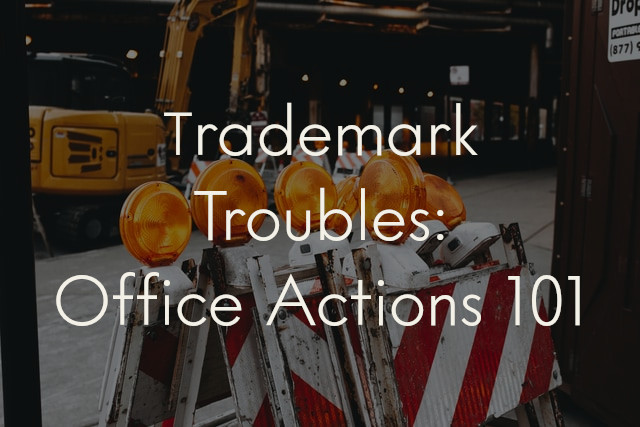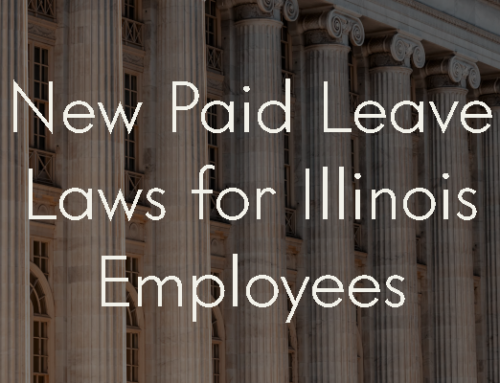- Trademarks are a key part of people’s businesses, protecting their names, logos, and associated phrases.
- Office actions are like roadblocks to getting your trademark registered.
- Some office actions are easy to predict and get around, but others might force you to find a new path to registration.
This article was derived from a livestream with Michelle Green and trademark attorney Michael Reed
What is an office action?
An office action is a letter that you receive from the U.S. Patent and Trademark Office (“USPTO”) informing you that your trademark application has been put on hold because there are some issues that need to be addressed before it can be registered.
What are the types of office actions?
An examining attorney could issue an office action to you for a number of reasons, but there are really only two kinds: non-final and final office actions.
A non-final office action is a request from the examining attorney to address certain legal issues that they’ve spotted within your application. These range from the simple, such as your application claiming rights over certain words in connection to the goods and services that you offer, to the serious, like if a trademark already exists or is already being registered that bears a strong resemblance to the one that you want to register. In cases like the latter, the examining attorney will find that a likelihood of confusion exists. This means that consumers might be confused about which company owns which mark, which mark is associated with which goods and services, and who provides those goods and services.
Non-final office actions, where you are simply asked to disclaim certain words or phrases that are a part of your application, are usually pretty easy to handle. The examiner will notify you which words or phrases they want you to disclaim in the letter that you will receive.
For example, when filing for the trademark “G & G Law,” we would have to disclaim the word “law”. If the USPTO registered this mark without disclaiming “law”, they would give us exclusive rights to use the word “law” for the services offered under our mark. Nobody else in our field could use the word “law” in the name of a business that provides similar services. Accordingly, the USPTO, in the public’s interest and in the interest of consumers, will push back an application that seeks registration for descriptive words or phrases such as “law.”
You can also run into issues with words translated into other languages. For example, you could have a T-shirt company called El Gato, which means “the cat” in Spanish. If another T-shirt company already exists called The Cat, you would almost certainly get an office action back. The examining attorney would ask you to distinguish your goods and services from the goods and services offered by the other company, even though the names are not technically the same. There’s still a likelihood of confusion. The two marks are still too likely to cause confusion in the mind of consumers and, in the public interest, the examining attorney would likely send you an office action.
Final office actions are much more serious. We’ll talk about them in the next section.
What should you do if you receive an office action?
First and foremost, you should contact a trademark attorney the moment you receive an office action. The proper response to an office action depends on the office action itself, but they are all improved by an attorney’s advice. Whether you just need to disclaim certain words or you have a conversation with the examining attorney to find out their basis for refusal, having a knowledgeable attorney by your side will give your mark its best chance at registration. The USPTO will give you a detailed description in the letter that you receive, but you should still reach out to make sure that you’re understanding their objection properly. You only get one chance to respond. If you don’t raise any new legal issues and the examining attorney is not satisfied with your response, you will receive a final office action, which is much harder to deal with. If you can’t convince the examining attorney to register your mark after the final office action, your registration will be denied.
Responding to any office action, but especially final office actions, warrants a lot of careful thought. There are certain arguments that you must raise or you will lose your chance at registration. You have a six-month window from the issuing of the office action to resolve any legal issues that the examining attorney has identified. During this period, we highly recommend that you find an attorney to assist you with your application as soon as possible. Ideally, you want to find an attorney within a couple of days to a week after receiving the office action to give them the full six months to respond. Even giving an attorney four months to respond is cutting it close, especially if the examiner raises further objections to the samples that you provided in your application. It may take some time to produce acceptable samples that demonstrate the goods and services that you provide. Procrastinating can lead to very stressful situations and gives you less time to correct any mistakes before your response to the office action is due. Reach out to an attorney as soon as possible after receiving an office action. Do not respond on your own.
Once you retain an attorney to respond to the office action, they usually go back and forth with the examiner unless the action required is very simple. If the examiner raised a more substantial objection, there are usually several correspondences to make sure that both sides have a clear understanding of not only what the examiner’s objection is, but also how they would like to resolve it. Once that process is done, the attorney works with either the applicant or the examining attorney to make sure that all the materials are assembled for the response.
What should you do if you expect a final office action?
Consider shifting your strategy if you suspect that your mark may not be registered because of an existing mark. Specifically, you should especially consider abandoning the application in the case of a refusal under Section 2(d) of the Lanham Act. This refusal means that the examining attorney found a mark in the trademark database that is identical to the one that the applicant is seeking to register. The troublesome trademark could be either in the registration process with a prior date or already have completed registration. In this case, the applicant’s mark would create a substantial likelihood of confusion if it were granted and the application is rejected. This rejection could be avoided only if the services and goods offered under the proposed mark were substantially different from those offered under the existing mark, and this fact would have to be demonstrated to the examining attorney. Any other response an attorney would give would be rejected and result in a final notice of refusal.
What is the process and timeline for responding?
Usually, the USPTO gives you six months to respond to an office action. In addition, you can usually get at a three-month extension. After that, barring extraordinary circumstances, the government will not grant any further extensions, so your best bet is to respond appropriately within that initial first six months. If you end up having to having to submit a request for an extension, it may get denied. Do not rely on the extension as a given.
Do not underestimate the potential complexity and time-consuming nature of office actions. Responses to office actions involve more than simply filling out boxes on a form. They usually involve research, crafting arguments, and adding evidence, like photos or additional images demonstrating that you are using your mark in the way that you claim and in connection with the goods and services listed. For example, an examining attorney might contest your supposition that you actually offer services under the mark listed in the registration Thus, the examining attorney might ask you to prove it or to amend the service description in the application.
How can you avoid an office action?
The best way to prepare for an office action is to make sure that you know what is coming. You may not avoid one entirely, but anticipating one will help you know what you need to do to prevail. It’s all about strategy. Hiring an experienced attorney can help you build an effective strategy. One of our first steps at G & G Law is conducting a comprehensive search of the USPTO database, the internet, and trademark-related court filings. These searches will discover similar marks to the one sought to be registered. Doing this search before applying helps us assess the application’s likelihood of success, enabling us to reasonably predict whether an application will succeed, what office actions are coming (if any), whether they’re easily deal with, or whether alternate registration strategies should be explored.
How much does it cost to respond to an office action?
Our fees for office action responses vary depending on how much time the response takes, the complexity of the office action, and our chances of success.
The G & G Law flat fee for a simple trademark application and registration is $1,100 plus government fees. That fee includes responses to simple office actions. You can find more information about our trademark services here.
Our fee schedule changes when a client didn’t retain us for the initial application. In these situations, we need to spend more time unraveling the events leading up to the office action. Our flat fee to respond to an office action in these cases ranges from $1,300 to $3,300, depending on the complexity. There might be fees from the USPTO
In most office actions, the government won’t require you to pay an additional fee to respond. They want to move the process forward. There may be situations where fees will apply, though. Fees are usually around $100, which is normal for government fees. These additional fees would be for processing things like additional samples that you have to submit or for a filing that is ancillary to the actual application (for example, when the ownership of a mark changes hands or an assignment is required from a foreign entity). In situations like these, you will have to submit a separate form and there will be fees attached to that. The examining attorney will let you know of any additional filings fees that are required.
Talk with an attorney if you have any questions about the process. The USPTO attempts to provide guidance through their website, but it is an unbearable amount of information to attempt to absorb in a single sitting, especially if you have a business that you’re trying to run. Hiring an experienced attorney will make the process less stressful and help increase your chances of prevailing in your office action.
Also, hiring an attorney is a smart choice from a cost-benefit analysis perspective. You can spend the modest fees required to have an attorney complete your application, increasing your chances of success and relieving you of unwanted stress. If you’re just starting a business and you want to protect your business name, you often don’t want to invest too much until you have your business name secured. Your website, your business cards, maybe the sign for your storefront, the packaging for the products that you’re providing, all of those have to wait. All of that is based on the name of your business and making sure that you have the right to use this name, and even just knowing your chances as soon as possible is so important. Contact an attorney to help you estimate your chances and protect your investment.





